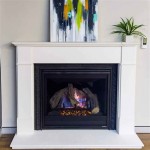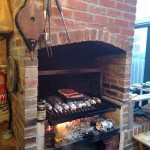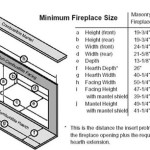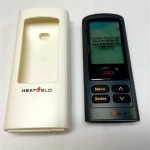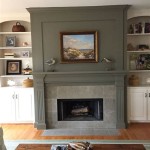Fireplace Des Moines, IA: A Comprehensive Guide
Des Moines, Iowa, experiences cold winters, making fireplaces a desirable amenity for homeowners. A fireplace can serve not only as a supplemental source of heat but also as a focal point for gathering and relaxation. Understanding the options available, the installation process, and the maintenance requirements are crucial for anyone considering a fireplace in the Des Moines area.
Types of Fireplaces Available in Des Moines
The market offers various types of fireplaces, each with its own advantages and disadvantages. These include wood-burning fireplaces, gas fireplaces, and electric fireplaces. Each type has unique installation requirements, fuel sources, and maintenance needs, making it important to choose the option that best suits individual preferences and property characteristics.
Wood-Burning Fireplaces: These fireplaces offer a classic aesthetic and the authentic crackling sound and aroma of burning wood. They require a chimney for proper ventilation of smoke and combustion byproducts. Wood-burning fireplaces are often favored for their ambiance, but they require more maintenance than other types. This includes regular chimney cleaning to prevent creosote buildup, a fire hazard. Sourcing and storing firewood is also a consideration.
Gas Fireplaces: Gas fireplaces offer convenience and ease of use. They can be fueled by natural gas or propane. Gas fireplaces are typically more efficient than wood-burning fireplaces, providing more consistent heat output. They can be turned on and off with the flick of a switch, making them a convenient option for quick warmth. Installation requires a gas line and venting, which can be costly depending on the existing infrastructure. Gas fireplaces also require regular maintenance, including inspection of the gas lines and burner components.
Electric Fireplaces: Electric fireplaces are the simplest to install, requiring only an electrical outlet. They do not produce actual flames but use electric heating elements to generate heat and simulate the appearance of a fire. Electric fireplaces are a cost-effective option for providing supplemental heat and ambiance. They do not require venting or fuel, making them a versatile choice for various locations within a home. However, they may not provide the same level of heat output or visual appeal as wood-burning or gas fireplaces.
Beyond these primary categories, ventless fireplaces are also available. These typically utilize gas or ethanol. Ventless gas fireplaces draw air from the room and release combustion byproducts back into the living space. While designed to operate cleanly, they can reduce indoor air quality and are subject to local building codes. Ethanol fireplaces, which burn liquid ethanol fuel, also do not require venting, but they generate less heat and still produce some emissions.
Installation Considerations in Des Moines
Installing a fireplace involves several considerations relating to safety, building codes, and proper ventilation. Adhering to local regulations and employing qualified professionals are essential for a safe and efficient installation.
Building Codes and Permits: The City of Des Moines, along with other municipalities in the area, enforces specific building codes related to fireplace installation. These codes typically address safety standards for chimney construction, venting requirements, and clearances from combustible materials. Obtaining the necessary permits before beginning installation is crucial to ensure compliance with local regulations and avoid potential fines or rework. Fireplaces may also be inspected during the installation process to verify code adherence.
Venting Requirements: Proper venting is critical for the safe operation of wood-burning and gas fireplaces. Wood-burning fireplaces require a properly constructed chimney to exhaust smoke and combustion byproducts. Gas fireplaces require either a direct vent or a B-vent system. Direct vent systems draw combustion air from outside the home and exhaust combustion byproducts directly outside, providing a sealed combustion process. B-vent systems use indoor air for combustion and vent exhaust gases through a vertical flue. The choice of venting system depends on the type of gas fireplace and the layout of the home.
Professional Installation: Installing a fireplace is a complex task that requires specialized knowledge and skills. Hiring qualified professionals ensures that the installation is performed safely and according to code. Professionals can assess the home's existing structure, determine the appropriate venting system, and ensure that the fireplace is properly connected to fuel and electrical sources. Improper installation can lead to safety hazards, such as carbon monoxide leaks or fires. Reputable fireplace installers in Des Moines possess the necessary licenses, insurance, and experience to perform the work safely and effectively.
The location of the fireplace within the home also impacts the installation process. Factors such as the proximity to existing walls, flooring materials, and electrical outlets need to be considered. Adequate clearances from combustible materials are necessary to prevent fires. Reinforcements may be required in the floor or wall to support the weight of the fireplace. Proper insulation around the fireplace is also important for energy efficiency.
Maintenance and Safety
Regular maintenance is essential for ensuring the safe and efficient operation of a fireplace. Proper maintenance can prolong the lifespan of the fireplace and prevent potential hazards. Specific maintenance tasks vary depending on the type of fireplace.
Chimney Cleaning: Wood-burning fireplaces require regular chimney cleaning to remove creosote buildup. Creosote is a highly flammable substance that accumulates in the chimney as a byproduct of burning wood. Over time, creosote can build up and ignite, causing a chimney fire. The National Fire Protection Association (NFPA) recommends that chimneys be inspected at least once a year and cleaned as needed. Certified chimney sweeps use specialized tools to remove creosote and ensure that the chimney is clear of obstructions.
Gas Fireplace Maintenance: Gas fireplaces require regular inspection of the gas lines, burner components, and venting system. A qualified technician can inspect the gas lines for leaks, clean the burner components to ensure proper combustion, and check the venting system for obstructions. Carbon monoxide detectors should be installed in homes with gas fireplaces to provide early warning of potential leaks. Professional servicing is typically recommended annually to maintain optimal performance and safety.
General Safety Practices: Regardless of the type of fireplace, certain safety practices should be followed. Never leave a fire unattended. Keep flammable materials away from the fireplace. Use a fireplace screen to prevent sparks from escaping. Ensure that carbon monoxide detectors are functioning properly. Teach children about fireplace safety. Adhering to these safety practices can help prevent accidents and ensure a safe and enjoyable fireplace experience.
Specific to wood-burning fireplaces, choosing the right type of wood is vital. Seasoned hardwood, such as oak or maple, burns hotter and cleaner than softwood. Burning unseasoned or wet wood produces more smoke and creosote. Storing firewood properly, away from the house and off the ground, helps prevent insect infestations and rot. Proper ventilation of the firebox is also essential for efficient combustion.
For gas fireplaces, maintaining the proper gas pressure is important for optimal burner performance. Low gas pressure can result in a weak flame, while high gas pressure can cause incomplete combustion and carbon monoxide production. Ensuring proper airflow around the fireplace is also essential for preventing overheating. Regularly cleaning the glass front of the fireplace improves visibility and reduces the accumulation of soot.
In conclusion, choosing a fireplace for a home in Des Moines requires careful consideration of various factors, including the type of fireplace, installation requirements, and maintenance needs. Understanding these aspects is essential for making an informed decision and ensuring a safe and enjoyable fireplace experience.

Chim Cherie House Of Fireplaces Wood

Chim Cherie House Of Fireplaces Wood

Chim Cherie S House Of Fireplaces 10 Photos 534 35th St Des Moines Iowa Fireplace Services Phone Number Yelp

Chim Cherie House Of Fireplaces Wood

Chim Cherie House Of Fireplaces Wood

Chim Cherie House Of Fireplaces Wood

Chim Cherie House Of Fireplaces Gas

Chim Cherie House Of Fireplaces Electric

Chim Cherie S House Of Fireplaces 10 Photos 534 35th St Des Moines Iowa Fireplace Services Phone Number Yelp

Chim Cherie House Of Fireplaces Chimney Sweeping
Related Posts




